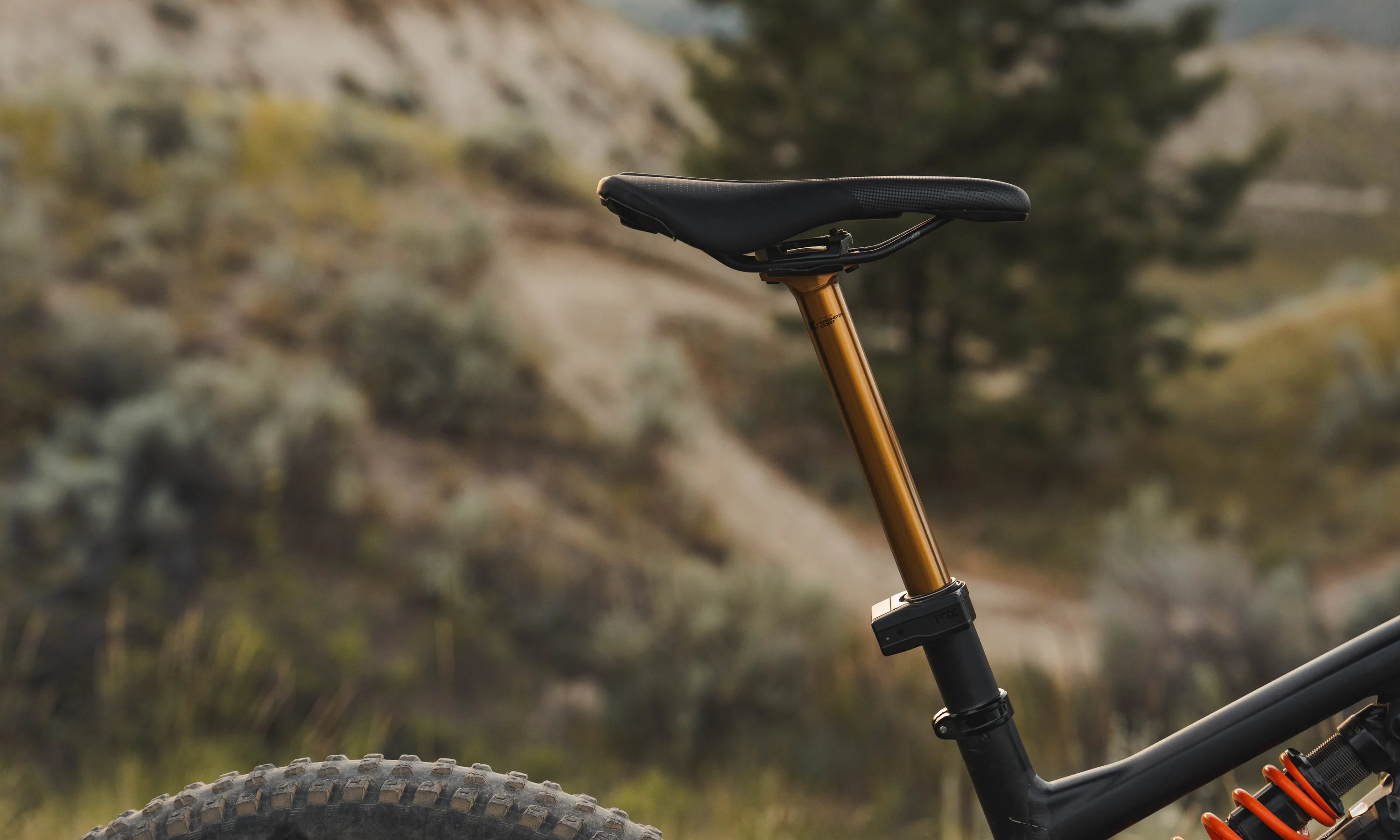Long, low, and slack — that is now the holy trinity of modern mountain bike geometry. If you're shopping for your next mountain bike and downhill performance is a priority, this geometry philosophy should be a major consideration.
The geometry shift toward the long/low/slack trinity can be traced back to 2013 when the Spanish company Mondraker introduced its Forward Geometry concept. Reach and head angle are the long and slack aspects of the trinity, respectively. Low refers to bottom bracket height, but many brands report BB height differently, so it will be omitted for this basic explanation.
Let's focus on reach and head angle, which are easily compared across brands. Reach is the horizontal distance between the center of the bottom bracket and the center of the head tube. Head angle measures the inclination of a straight line from the front axle through the centerline of the head tube.
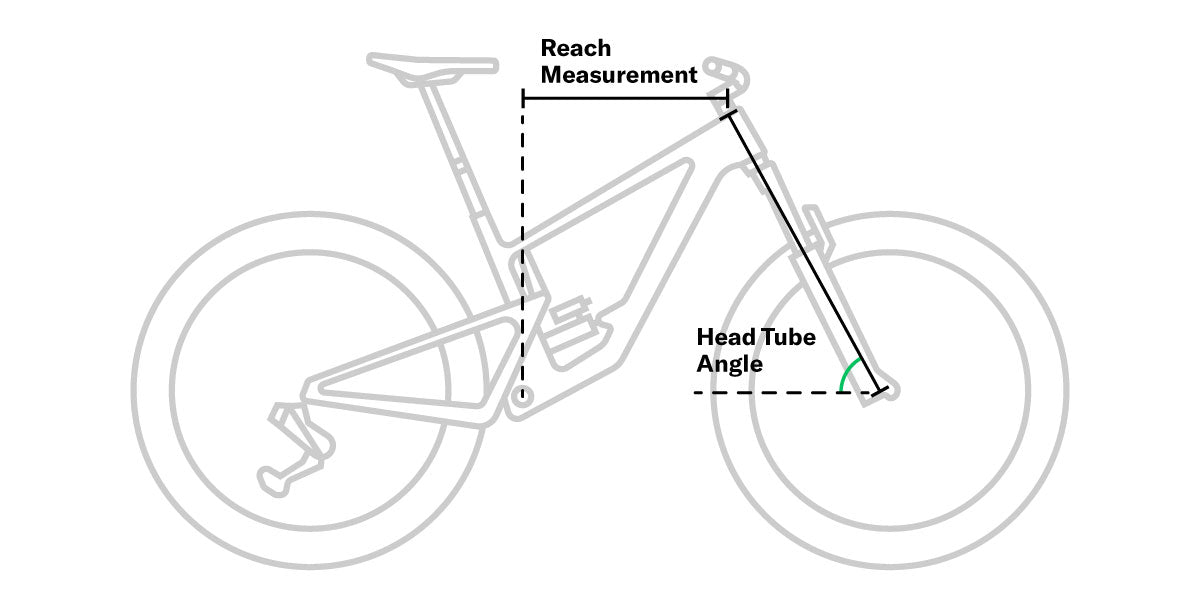
In recent years, mountain bikers have realized that longer reach, paired with a slack head angle, improves stability and confidence on fast descents. Today's mountain bikes are significantly longer than their predecessors. For example, a 2015 Trek Remedy had a 434mm reach and 67.5-degree head angle, while the 2020 edition of the Remedy measures 461mm in reach with a 66.1-degree head angle (size large) — and that is one of the more conservative examples.
[button]Shop Mountain Bikes[/button]
Mondraker's Forward Geometry bikes were revolutionary because they had significantly more reach than other production mountain bikes at the time. Mondraker was so far ahead of the curve that these reach numbers are still in line with some of the most progressive bikes currently available. Riders and manufacturers took notice and the rest of the industry has been playing catch-up ever since.
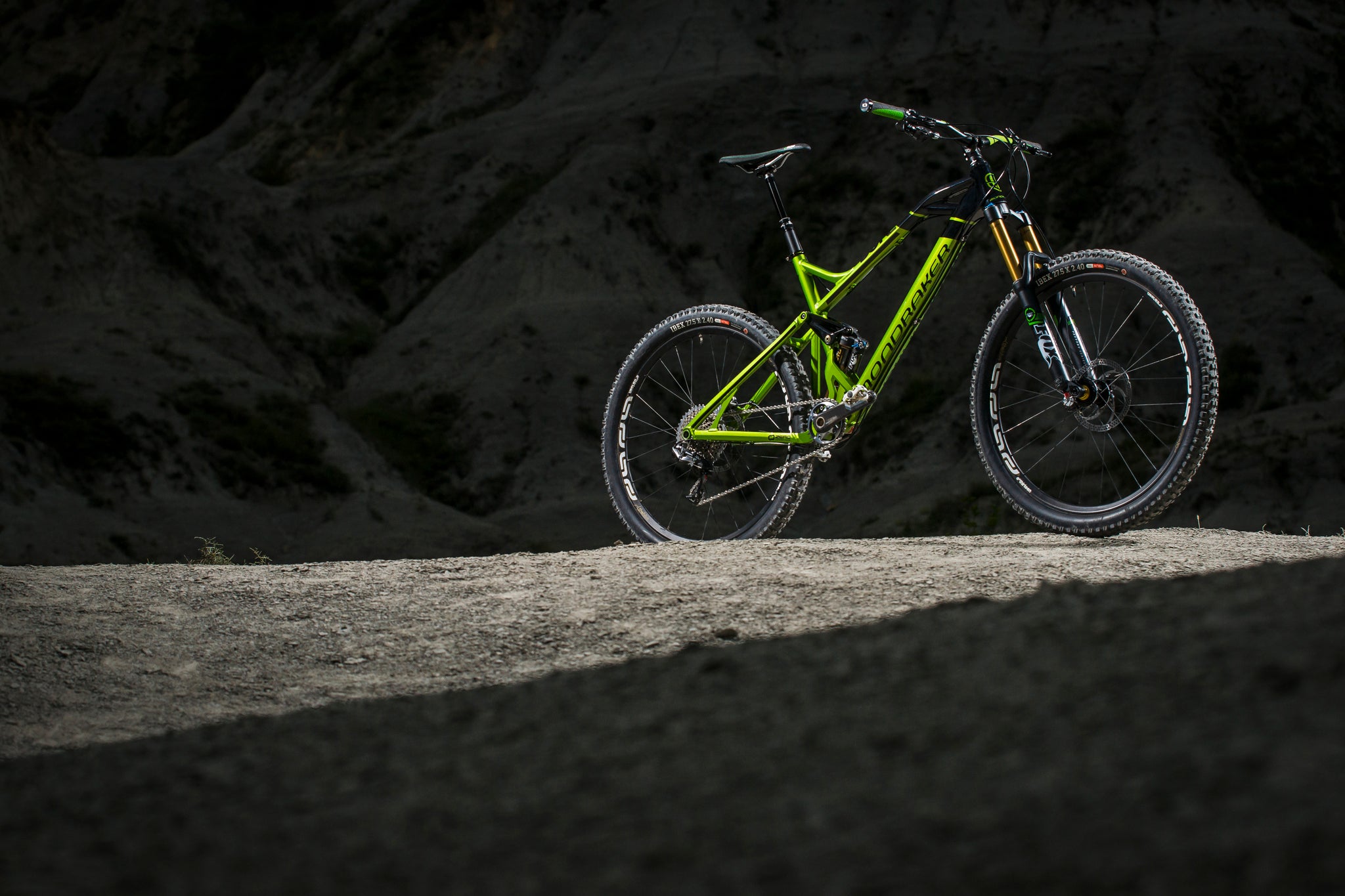 A 2013 Mondraker Dune XR — one of the original Forward Geometry bikes
A 2013 Mondraker Dune XR — one of the original Forward Geometry bikes
The latest Foxy 29 enduro/trail bike has a class-leading reach of 490mm (size large), almost 30mm longer than Trek's current Remedy. I rode a Mondraker Foxy Carbon for the first time in 2018, and it revolutionized how I saw geometry. My appetite for bikes with longer reach numbers has only grown more voracious. Ever since then, I’ve compared the reach of every bike I've purchased against Mondraker's benchmark.
Founded in 2001 in Alicante, Spain, Mondraker is already prolific in Europe, especially on the World Cup DH circuit. It has only just begun to enter the U.S. market. To learn more about this innovative young brand, I spoke to Mondraker’s product and marketing manager, Israel Romero. He’s intimately involved with Mondraker’s product development and he explained the origin story of Forward Geometry and how making mountain bikes longer has changed them for the better.
The Pro’s Closet: You were the first major brand to produce bikes with longer reach and front center measurements. When did you begin experimenting with your Forward Geometry concept?
Israel Romero: “The Forward Geometry concept is something we had been working on since 2011. At the time, geometry on mountain bikes hadn't evolved much. With downhill mountain bikes, we wanted to improve control, maneuverability, and confidence. And we wanted to make improvements not just for downhill applications, but for all types of mountain bikes. For inspiration, we looked to the motorcycle world, we looked to the BMX bikes, and we looked to motocross bikes.
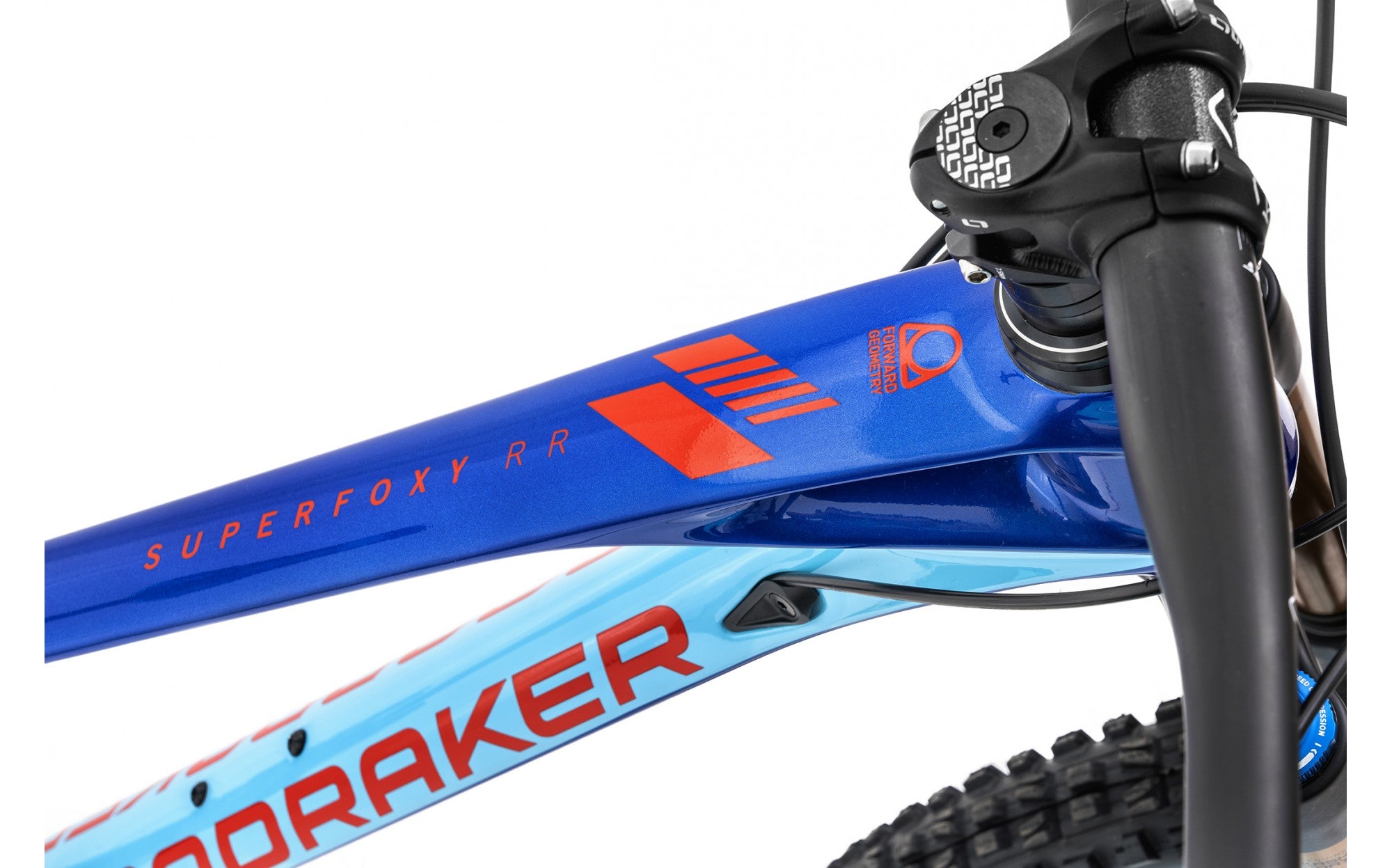
“We called it 'Forward' as it was a 'forward evolution' compared to the existing 'classic' geometries. Forward Geometry refers to geometry with a longer top tube combined with a short stem. We introduced it in our 2013 collection in the Factor XR, Foxy XR, Dune XR, and Summum DH bikes. Basically, on any given size frame, we made it 60mm longer in reach. Then we took the normal stock 70mm long stem length and reduced it 60mm, meaning we offered a 10mm, super-short stem.”
TPC: How does longer Forward Geometry improve downhill performance on a mountain bike?
IR: “With Forward Geometry you can expect to feel more confident in technical terrain and steeper downhills. You feel more stability and better weight balance. The original idea is really simple. Some of the greatest ideas in the world are very simple. Just make the bike longer.
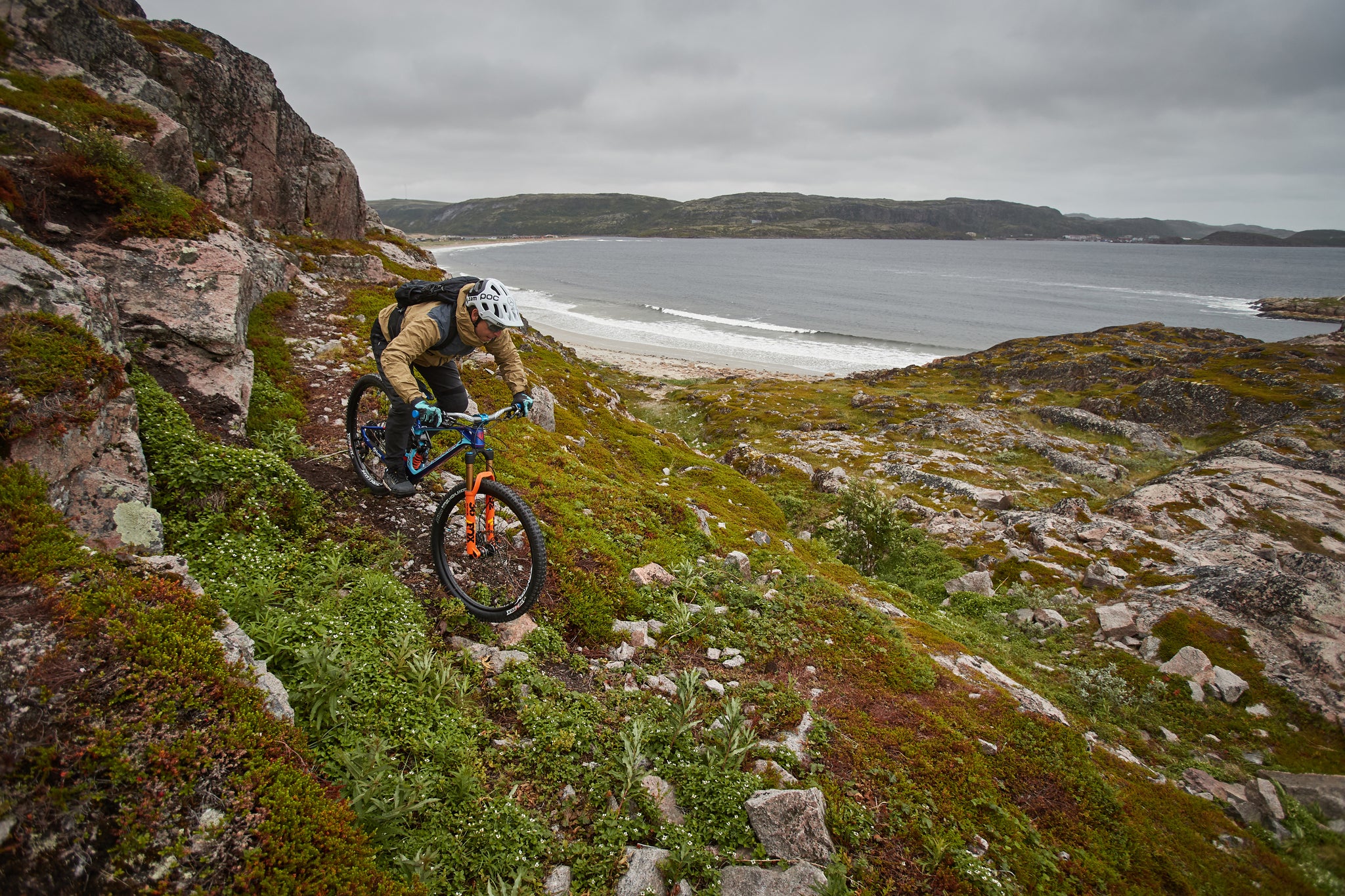
“We discovered a lot of benefits to this by testing internally different front axle distances, different head angles, bottom bracket heights, chain stay lengths. We can tweak them to improve riding physics and ride dynamics. Based on what we have learned throughout the years, we've been able to progress the experience of mountain biking to a whole new level.
“On uphills too, the bike is more stable. Typically shorter bikes want to wheelie. But because the front center — the distance from the bottom bracket to the front axle — is longer on Forward Geometry bikes, the front wheel will not leave the ground in very steep uphill terrain. We were surprised how well the bikes pedaled uphill when we designed them originally.”
TPC: Was it hard to get athletes on board with such a radical design concept?
IR: “For sure, this concept proved to be very extreme for most riders, so we opted to democratize it a bit in 2014 by increasing the extreme 10mm stem to a more “normal” 30mm stem. Since then, Forward Geometry has been offered in this form on all of our performance mountain bikes.
 The short 10mm and 30mm stems designed for Mondraker Forward Geometry bikes
The short 10mm and 30mm stems designed for Mondraker Forward Geometry bikes
“We had two main engineers on the project, and we were testing a lot with [mountain bike legend] Fabien Barel and Damien Spagnolo from the Mondraker-Subaru Team. They were our top DH racers in the World Cup. Fabien had won the Maribor DH World Cup for Mondraker in 2009 and his inputs on Forward Geometry were very important.
“Fabien was actually hard to convince at first, but once he rode the first prototypes back in 2011 and we had refined the geometry a bit, he became completely fond of it. That year, Spagnolo ended up finishing second at the World Championships in Champery Switzerland on a large-framed Summum prototype with Forward Geometry.
TPC: Is it true that bikes with longer reach need to be ridden more aggressively and at higher speeds?
IR: “The weight balance is a bit different on our bikes. You can feel more grip on your front tire, but you need to learn to ride with your weight shifted slightly more toward the front of the bike, actively pushing forward. Be more aggressive like this and you'll have even more confidence in your front tire grip.

"The more aggressive you are and the faster you go, the better the bike will ride. It might take a couple of rides, but once you get used to it, it just becomes natural. In some very tight and slow corners, it could be a bit more difficult to turn because our bikes are longer, but as I said, the faster you go, the better. Enter a corner wider, hit the apex, and exit to the outside. In most riding situations, 99 percent of riding, all you’ll feel is the benefits and improvements in speed."
TPC: It was an impressive moment when Mondraker riders swept the men's podium at the 2016 Downhill World Championships. Val di Sole is one of the hardest downhill tracks with incredibly steep pitches and very technical terrain. Is that where Forward Geometry bikes really shine?
IR: “That was probably our most recognized highlight ever. The hardest track, the most demanding, yet with almost no pedaling. It’s the type of track where you have to commit and let the bike perform.
"Rider skill combined with Forward Geometry definitely has something to do with it. But sweeping the World Championship podium was a matter of luck we'd say too! No other brand has done that in the history of the sport. For us, Val di Sole is the DH mecca! And Laurie Greenland won the 2019 World Cup at Val di Sole again. This place means a lot to us.
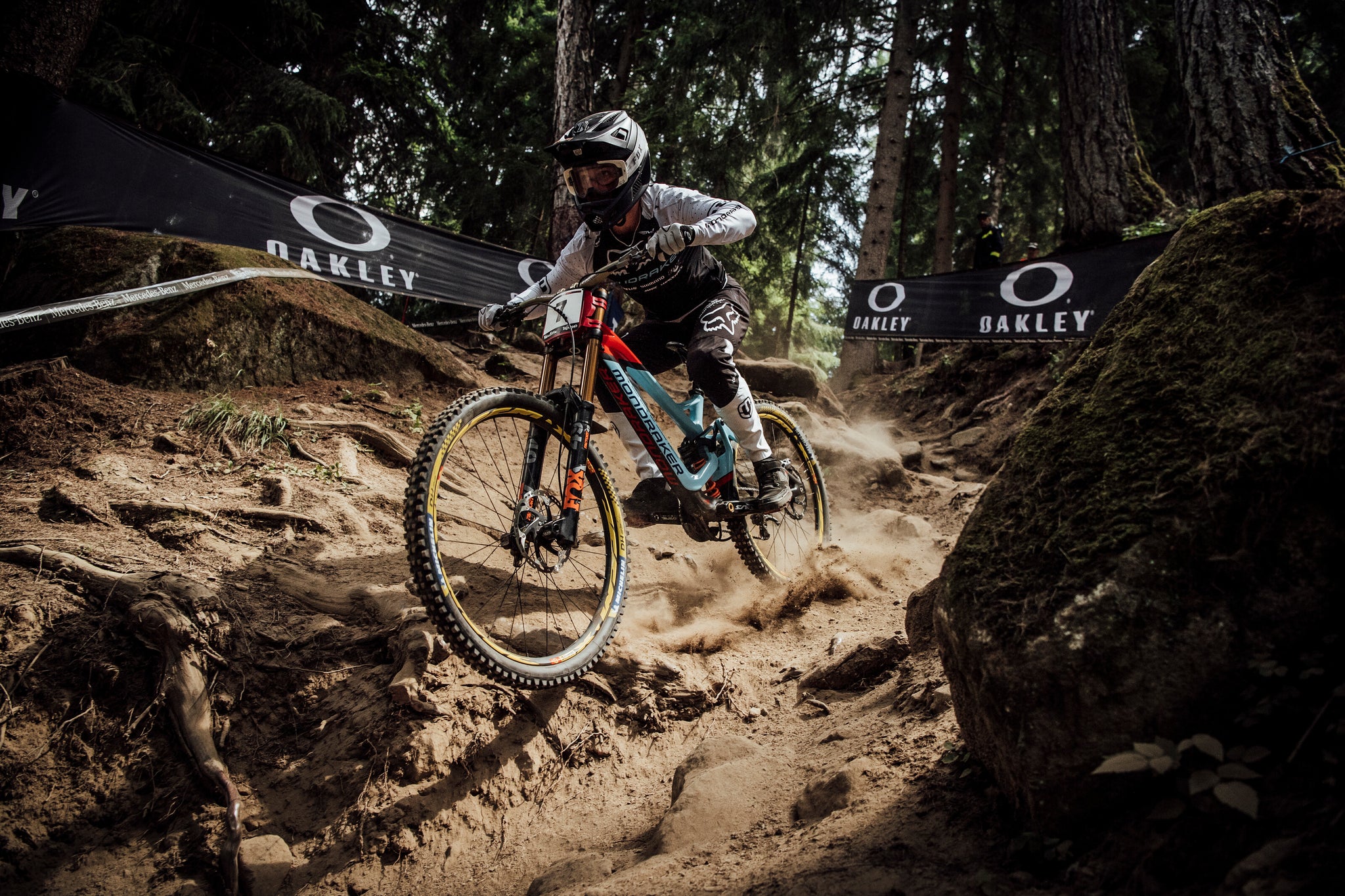 Laurie Greenland at Val di Sole, 2019 | Photo Credit: Bartek Wolinski/Red Bull Content Pool
Laurie Greenland at Val di Sole, 2019 | Photo Credit: Bartek Wolinski/Red Bull Content Pool
“I'll also say that our Zero Suspension System maybe doesn't get the recognition it deserves for our success. It is one of the reasons for the great performance and speed of our bikes. We introduced Zero in 2009 with the original Dune and then on the first-ever Summum DH bike in 2010. The Summum is what our racers compete on and it continues to be a benchmark as a DH race bike.”
[newsletter]
TPC: Mondraker is a trendsetter in the mountain bike world. Other brands seem to be catching up and making bikes with similar or even more extreme geometry. What continues to set Mondraker apart?
IR: “In the mountain biking world, our move to Forward Geometry started a revolution. Of course, we’re happy about this. We've seen several brands move to lengthen their bikes over the last five years, and that's a great thing for mountain biking. I guess everyone has realized that longer is better. Before Forward Geometry, we were all riding very short bikes. Now things have changed for the better.
“We'd say that Forward Geometry is the current geometry benchmark on today's mountain bikes. Most brands are, as you say, 'catching up.' But just continuing to make bikes that are always longer, lower, and slacker is not the core of the Forward Geometry concept. It’s about having a perfectly balanced geometry that works as a whole for each bike, and for each specific application. We've been focused on this since we released the original Forward Geometry models back in 2013.
“There are limits. Go too slack and you'll wash your front tire out on every corner. Go too low and you’ll smack your pedals on everything when pedaling. Every single Forward Geometry bike has been exclusively designed based on its application, based on geometry numbers and knowledge learned and applied for years. Geometry has to be understood as a whole and every millimeter counts.”
[button]Shop Mountain Bikes[/button]




